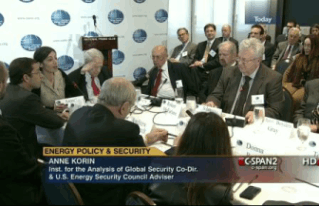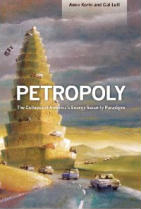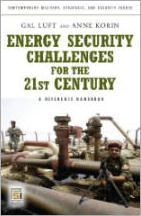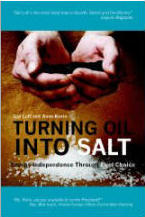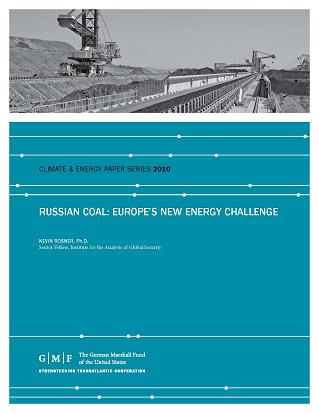At the beginning of the year the political outlook for oil and gas producer states looked bad. The oil price had dropped to $33/b having stood at $147/b a mere six months earlier leaving a number of producers fiscally exposed. For producer states, high oil prices were supposed to lead to political stability and economic growth at home, while enhancing the ability to project power abroad. This logic applied not only to the Persian Gulf, but to Venezuela, Russia, West and North Africa and to a lesser extent, Gulf Cooperation Council (GCC) states. As the oil price tumbled, it was expected that it would take a number of political casualties with it across the range of petro-states. This is not how things have panned out.
Governments from Moscow to Caracas have proven to be politically resilient in the eye of a sustained economic storm. Production cuts from OPEC played an important role in setting a price floor for oil, but more importantly, producer states resorted to the tried and tested centralization of power rather than engage in genuine political reform to paper over their own lingering domestic problems as oil prices slackened and popular discontent grew. Iran provides the latest and most notable example of this trend, while Venezuela, Russia, Nigeria and to a lesser extent, GCC states have not been afraid to further cement political regimes in what many leaders saw as a ‘near death’ experience due to the fall in the global price of oil over 2008-2009. How long political regimes in producer states could have survived without upward movements in the oil price remains an open ended question, but just as fiscal belts were being seriously tightened, prices have climbed back to $65-$75/b. Producer states might not be sitting entirely pretty just yet, but they are likely to leave 2009 far stronger than they entered it.
The result is that resource nationalism is likely to rise across the board in producer states keen to strengthen their political hands and refill state coffers once more. This could prove to have major implications for the market, not only for the relationship between producers and consumers but also for that between producers themselves.
Demand destruction
Oil producers were undoubtedly caught off guard as oil prices plummeted into 2009. Demand was increasingly seen as inelastic; producers set their domestic budgets above $80/b to secure domestic political support, and increasingly doled out money abroad to buy greater influence. In the process, OPEC earned as much in the first half of 2008 as they did in the whole of 2007 – putting $645 billion into state coffers. However, the paradox of booming commodity prices in the midst of collapsing credit markets could only last for so long as could the myth of the economic decoupling between emerging and developed market economies. As prices struggled to stay above $30/b once the oil bubble burst falling demand and desperation grew on Wall Street as investors and speculators exited their positions. This spelled serious trouble for producer states. Political survival was the order of the day.
Admittedly, any single narrative to explain how producer states reacted to these events doesn’t really work. All producer states seemingly have radically different political and economic positions to defend on a domestic and regional basis; every producer state maintains a different level of foreign reserves and political aplomb to navigate crises. For the GCC states, the response to falling prices was predominantly economic, injecting vast reserves to try and steady political ships while reinforcing steps towards economic diversification through counter-cyclical fiscal measures. Strong security apparatus were maintained, but this was designed to deal with the symptoms of political unrest rather than to address the underlying causes. Similarly in Russia, President Medvedev’s main task was to use stabilization fund to pay off oligarchs who were becoming increasingly restless as their wealth evaporated and to prop-up the banking sector rather than worrying about timid protests on the Russian-street.
Hugo Chavez has had a tougher time in Venezuela; revised fiscal positions, loosened monetary policy and bond issuances were never going to be enough to save his political skin. The passage of a long standing constitutional proposal to indefinitely extend his political tenure beyond 2012 could only do that – a tactic Bolivia and Ecuador have since tried to imitate with varying degrees of success. In the Persian Gulf, President Ahmadenejad’s blend of ‘populism’ and ‘potatoes’ was insufficient to provide a convincing ballot in Iran; blunt repression has been used as a stop gap instead.
Resource nationalism returns?
The key point from the major price correction in oil prices has not so much been the short term economic pain and political panic it inflicted on producer states, but the lesson that regimes in the Middle East, North and West Africa, Latin America and Eurasia have all managed to weather their own political storms. Economic crises did not translate into political abyss – even at $33/b, political coping mechanisms have been found.
The result is that the political complexion of producer states in August 2009 looks pretty much the same as it did in July 2008, despite historically wide price-spreads in the interim. Producer states will almost certainly look to turn their hard-fought political survival into renewed political capital. The most obvious way of doing this is not by constructing an edifice of upstream market liberalization to meet international demand (requiring around $6.5 trillion of new investment over the next twenty years), but rather through sharpened resource nationalism, political capping of reserves and a greater focus on national oil company investment to rebalance state budgets.
Many producer states have already bitten into the contract renegotiation apple to capture more from oil and gas revenue streams. Russia, Algeria, Nigeria, Libya, Kazakhstan, Iran, Ecuador and Venezuela are the most telling examples. The latter three now expect to see a collective fall of 1 million b/d in production to 2014, according to the International Energy Agency (IEA), while Russia expects to see its first year-on-year drop in production since 1998. On the flip side, production in Saudi Arabia, Angola, Kuwait and the UAE is likely to remain strong to help offset declines elsewhere, but it is by no means meteoric given that political priorities still dictate closely controlling reserves in order to maximize receipts in the short term and to tighten producer grips on concessions in the long-term. The market is likely to tighten once more.
Politics and price
Indeed, unlike previous ‘political risk cycles’ where prices have remained subdued for a long time following a boom-bust scenario, most producer states are already viewing another potential sustained bull run in oil markets in the next five to ten years. Having survived the political shocks over 2008-2009 they are unlikely to learn the lessons of needing to diversify and restructure their economies away from oil and gas while allowing for more upstream investment, but rather will continue to capitalize on short term rents through pressing their perceived strategic edge through control over reserves expressed by resource nationalism.
This has not been lost on traders; short-term speculation from supposed equity market ‘green shoots’ and a weakened dollar have played a role in bullish sentiment of late, but the real question being asked is whether the same structural factors leading up to the 2004-2008 spike will return once physical demand rebounds? Market fundamentals are not yet fully aligned for another sustained price rise, but at the very least, consumers should be in little doubt: politics as much as price will continue to dictate the market of supply side investment in future.
Turning to price first; international oil company (IOC) investment is expected to drop by around 15% to 20% in 2009 due to price-volatility and credit constraints. This could halve the expected growth in IOC oil production capacity over the next five years; weak investment in the maintenance of existing sites could also see supply side depletion rates speed up. But price can only explain so much given that IOCs have always taken the financial plunge over long project cycles in years gone by; the real problem is thus now political.
IOCs are now only currently able to vie for around 10% to 15% of global reserves due to the world’s largest fields residing in a handful of states. In the Middle East, national oil companies (NOCs) now control no less than 95% of reserves. And far from opening new doors for IOC investment, price spreads have not only made Western majors more cautious, it has hastened Asian NOC desire for security of supply for consumers on the one hand and demand security from indigenous producers on the other in regions spanning Central Asia, Latin America, Africa and indeed, the Middle East.
China gets busy
Political linkages take priority over price and indeed risk in such investments. China has been busy using the economic downturn as an opportunity for major resource acquisition by drawing on its $2 trillion in foreign reserves to turn financial capital into strategic presence. It spent around $25 billion on such investments in 2007, $52.7 billion in 2008, and this figure is expected to rise even further into 2009. Chinese investment has not only helped shore up disastrous current account balances in producer states such as Russia, Iran, Venezuela and in Central Asia but has further diminished the pool of accessible reserves for IOCs to tap by gaining concessions in key reforming states such as Brazil and to build closer linkages with energy giants such as Saudi Arabia.
This is not to say that NOCs will be adverse to making profits or putting more oil on international markets at times of their choosing, but security of demand and political control over resources comes first while enhancing the capacity of international oil markets to remain supply sufficient remains a distant second. Whether or not NOCs will eventually become as adept as IOCs at getting oil out of the ground is thus beside the point; without a major roll back of political risk all round, upstream supply will inevitably struggle to keep pace with demand.
Producer power or producer weakness?
The blunt reality is that having weathered the political storms over 2008-2009, reducing the market impact of political instability remains a highly unlikely objective for producer states to make. Saudi Arabia - busy enjoying the political windfall associated with holding around 4.5 mb/d of excess capacity as the swing producer in the cartel - is unlikely to invest much further until it can be sure of strong demand. Iran and Venezuela will be more than happy to see the oil price go back up. Tehran doesn’t want weakened prices to allow international sanctions to undermine its nuclear program while it concurrently needs to increase social spending to reseal new socio-economic fissures in its own domestic environment. Caracas for its part will push to maintain its revolution. Russia needs high oil prices to retain its seat at the Brazil-Russia-India-China (BRIC) table, and indeed the fiscal health and political fortunes of all other major producer’s remains deeply intertwined with a high benchmark price. Nigeria, Iraq, Angola, Algeria, Ecuador, Bolivia and Kazakhstan provide an obvious shortlist in this respect. GCC states can also only stand above the political fray for so long amid fluctuating oil prices.
Thus while oil producers may not have been political winners over 2008-2009 as prices collapsed, they have proven to be adept political survivors. Upstream investment hardly ranks as a top priority for those still grappling with tight budgets; instead the name of the game is to leave oil in the ground today in order to make more tomorrow while continuing to reign in supply to maintain high prices (albeit largely at GCC expense). The upshot is that consumers could face another price crunch in the coming years as investment lags and demand rises, but this would not come without additional political costs for producer states either. Inflationary pressures are the most obvious concern, but with production levels between the price hawks and price moderates set to widen within OPEC and between non-OPEC ranks, the potential for geopolitical friction between the Gulf States and the newly dubbed axis of diesel (Venezuela, Iran and Russia) will sharpen.
If price moderates are wise, they will not only act to cool the market to prevent another bubble from bursting (while gaining political plaudits from consumer states along the way), but continue to invest in economic diversification at home. In such a scenario, the real divide would not be between producer and consumer states, but among producers that have used oil windfalls wisely and those who have flittered receipts away. Ultimately these comparative actors will remain a mere subplot in relation to the broader friction between producer and consumer states in the absence of any agreed upon price band. Many producers will no doubt see another price rise as a strategic victory in the coming years, but unless they have learned the lessons of 2008-2009 price-collapse to diversify their economic bases away from narrow resource wealth, once the next bubble bursts, they will no doubt need to make a dash for political survival once more.
Matthew Hulbert is a Senior Fellow with the Center for Security Studies, ETH Zurich, Switzerland and Anahita Arian is an IR Graduate from the University of Groningen



 Archive
Archive 



